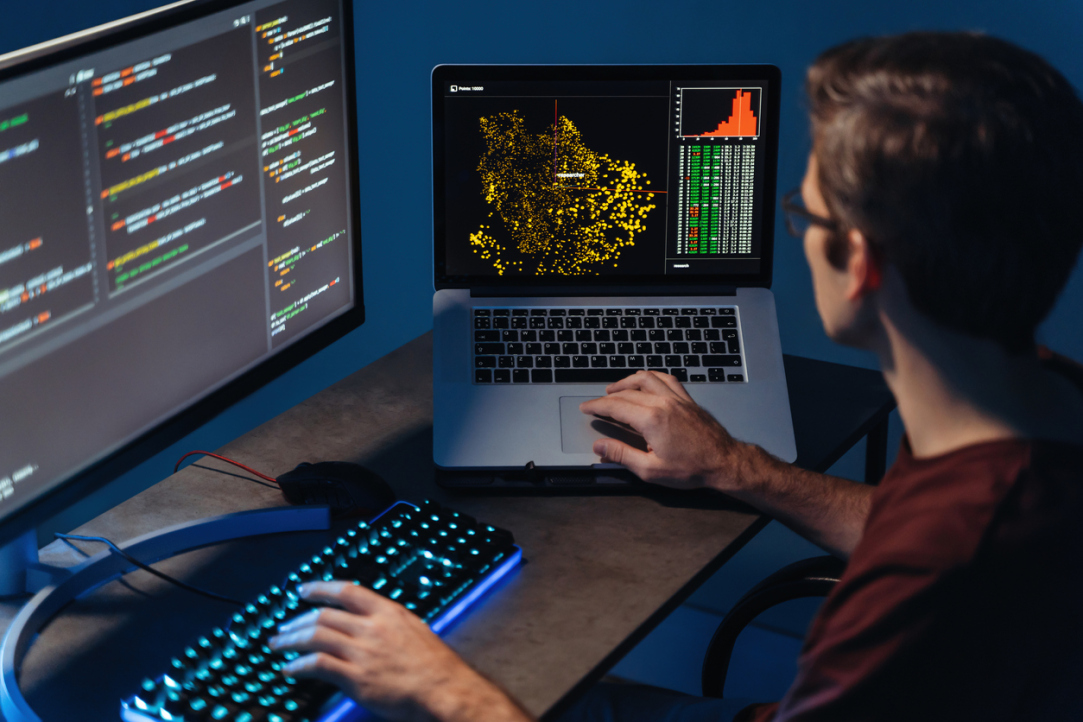.jpg)
HSE Biologists Explain Mechanism behind Coronavirus Evolution
A team of researchers, including scientists of the HSE Faculty of Biology and Biotechnology, have analysed the evolutionary path of the coronavirus from the Wuhan variant to Omicron. Their findings indicate that many genomic mutations in SARS-CoV-2 are shaped by processes occurring in the intestines and lungs, where the virus acquires the ability to evade the inhibitory effects of microRNA molecules. The study findings have been published in the Journal of Medical Virology.

How the Telephone Conquered the World. Episode Two: 'Only an Electrical Speaking Tube'
The history of the invention of telephony reads like a captivating detective novel, but even more intriguing are the events that contributed to the worldwide adoption of this technology. In this series of columns on IQ.HSE, Anton Basov, HSE Faculty of Computer Science editor, discusses how telephones have become an integral part of our everyday life. The second episode in the series recounts the story of Alexander Graham Bell, who along with his wife and partners embarked on the journey of creating their 'start-up', seeking investments, promoting the telephone in Europe, and grappling with the absence of patent laws.

Researchers Predict Film Scores by the Activity of Facial Muscles
Researchers from HSE University and MEPhI have analysed which physiological indicators recorded when watching a movie can predict the audience's assessment. It turned out that the activity of zygomaticus major (the ‘smiling muscle’), heart rate variability and EEG indicators can tell us most about the viewer’s impression of the movie. The results of the study were published in the Frontiers journal. The Government of the Russian Federation supported the research with a mega-grant as part of the ‘Science and Universities’ national project.

How the Telephone Conquered the World. Episode One: 'My God, It Talks!'
The telephone was invented more than 150 years ago. The history of its invention reads like a detective novel, replete with painstaking work, serendipitous discoveries, moments of enlightenment, and legal battles. Even more intriguing are the events that led to the worldwide adoption of this technology. In this series of columns on IQ.HSE, Anton Basov, HSE Faculty of Computer Science editor, discusses how telephones have become an integral part of our everyday life. The first episode in the series recounts the story of Emperor Pedro II of Brazil demonstrating Bell's telephone at the 1876 Centennial Exposition in Philadelphia.

Doctor's Consultation in Russia Doesn’t Depend on Family Income and Is Available to Everyone
HSE University economists have found that more than 60% of Russians rely on self-treatment instead of visiting a doctor, something which is facilitated by the easy availability of medicines in Russian pharmacies. This is especially typical for mild illnesses. Buying medicines depends on income, and quite often people replace expensive medicines with cheaper ones. The article was published in the International Journal of Health Economics and Management.

Good Deeds Bring Moral Satisfaction to Russians
Researchers from HSE University have analysed why people feel happier when they help others. It turns out that joy is caused by different reasons, depending on who we help — relatives or strangers. In both cases, happiness brings moral satisfaction from doing a good deed, but helping loved ones is also associated with satisfying the need for belonging and acceptance, while helping strangers provides a sense of autonomy. The results of the research were published in the Journal of Social and Personal Relationships.

Russian Radio Astronomers Discover a Method for Predicting Solar Flares
Researchers from HSE in Nizhny Novgorod and the Pulkovo Astronomical Observatory (CAO RAS) examined data on microwave emissions from several active solar regions. Astronomers discovered that a few hours prior to a flare, there was an increase in oscillations in the region with the highest observed brightness of the microwave emission during the flare. This method can potentially be used to achieve more accurate predictions of severe solar flares. The study has been published in Geomagnetism and Aeronomy.

Teaching Masters' Students and Conducting Lectures in English Boost Academic Productivity
HSE researchers have analysed teaching load data at the HSE campus in St Petersburg to investigate the potential impact of teaching on faculty research output. They found that factors such as teaching primarily masters' courses, conducting 20% of lectures in English, and supervising only one doctoral student per year were associated with a greater likelihood of producing more high-quality academic papers. The study has been published in Higher Education Quarterly.

Stimulating the Blood-Brain Barrier Can Help Patients with Alzheimer's
Researchers at HSE University and the Russian Academy of Sciences Institute of Molecular Biology have proposed investigating the response of the blood-brain barrier (BBB), the brain's natural filter that becomes disrupted by the disease, to transcranial brain stimulation. Understanding how the BBB changes during stimulation can, in theory, enhance treatment by facilitating more effective delivery of medications to the brain in the early stages of the disease, and by providing therapeutic support for brain function in the latter stages. The study has been published in Communications Biology.

AI Researchers Have Developed an Algorithm to Determine the Properties of Two-Dimensional Materials by Analysing their Defects
An international team of researchers with the participation of young scientists from the HSE Faculty of Computer Science and Artificial Intelligence Centre have developed a machine learning algorithm that can determine the properties of new 2D materials with point defects. The new method is 1000 times faster than quantum mechanical computations and 3.7 times more accurate than other machine learning algorithms. The results have been published in npj Computational Materials. The source code, dataset, and model weights are available in the repository under an open licence.


Application deadline: June 23, 2025